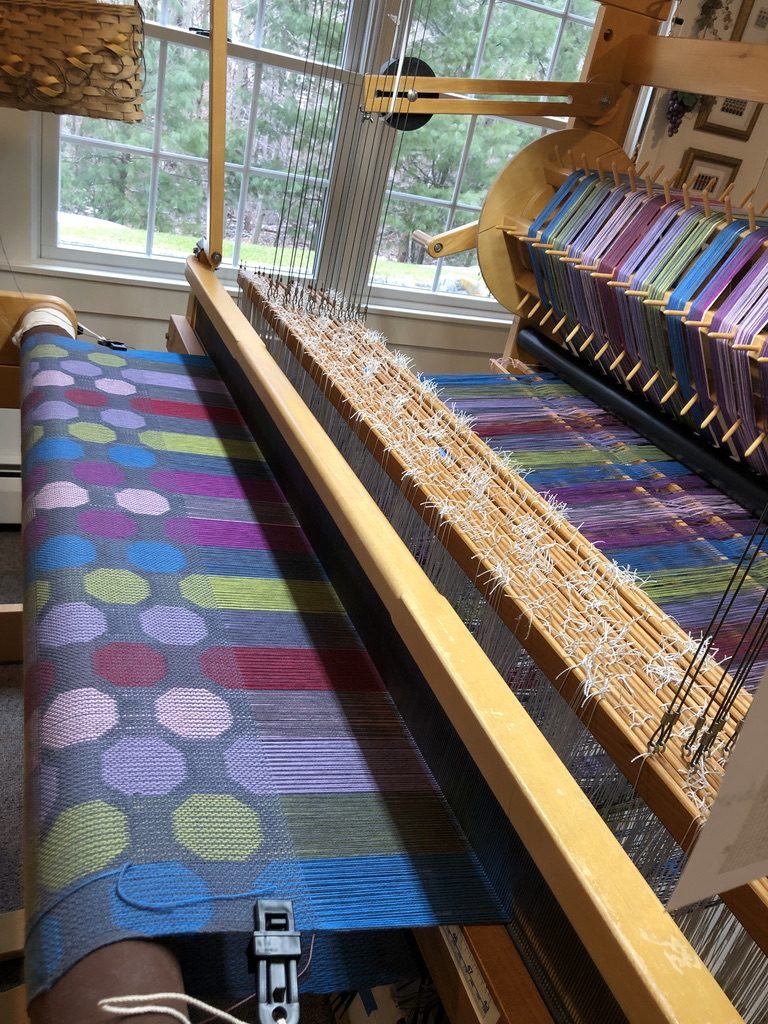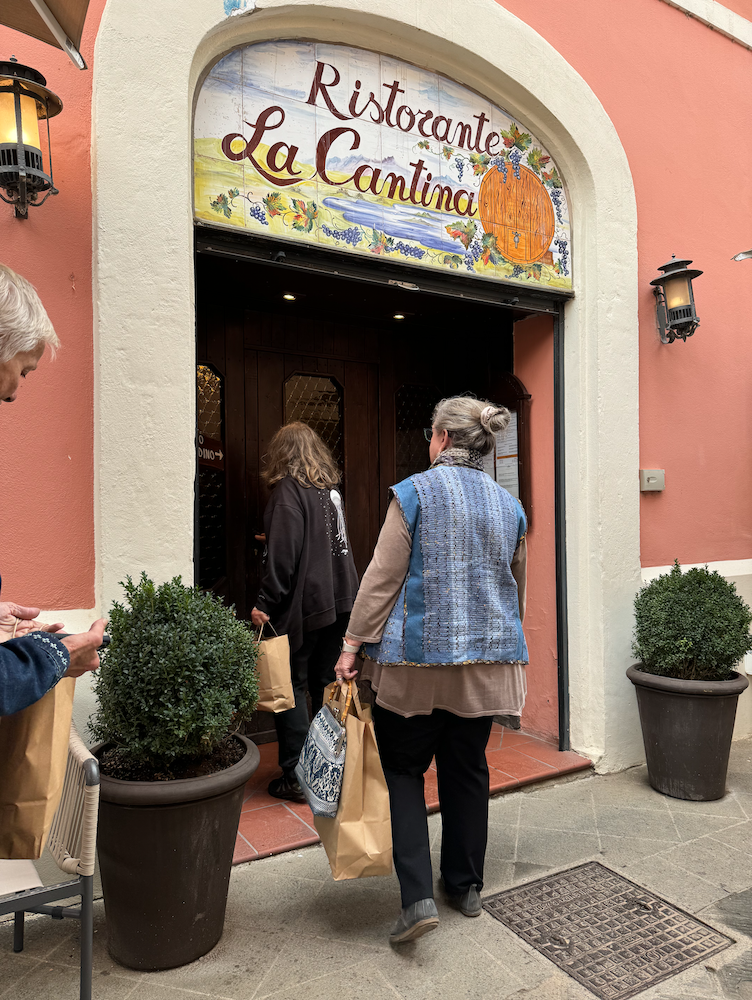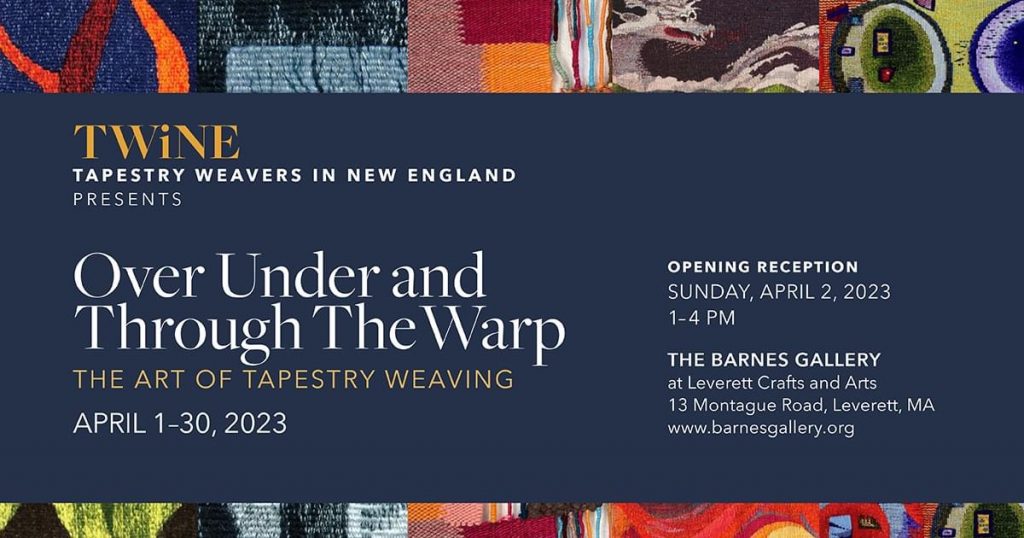I now have a few projects in Notion somewhat under control. I absolutely could not set it up myself, so my younger son came to my rescue. He loves Notion. He says you can create any kind of system for keeping track of things with it, from spread sheets, graphs, tables, or even ‘cards’ with info. And you can add photos and notes. You have to know how to do this yourself though; there are precious few tutorials. It’s a tracking app for people who are already computer savvy, and that is not me. I have a lot more data to put into my Notion file, but I’m off to good start.
This week I am in an online class with Cally Booker on Doubleweave Huck. The Michigan League of Handweavers is hosting this class. They are in Michigan, Cally is in Scotland, and I am in the Caribbean. What a world. There are three class days, and we’ve already had two of them. Cally gets online mid-afternoon, while the Eastern US folks (including the Michiganders) get online at 9:30 am, most of them with coffee cups in hand. I am on Atlantic time and have finished my coffee and breakfast by the time class starts for me at 10:30. An old acquaintance of mine, from my first guild in central New Jersey, whom I’ve thought of fondly over the decades since I moved away from NJ, is taking the class from Arizona. She has to be ready to participate at 7:30 am. When we finish, Cally is ready for tea, and I am ready for lunch. My friend in Arizona can still get some breakfast! Indeed, what a world.
I don’t have a loom onboard, so I am weaving virtually, as well as being virtual myself. I have put a standard 8S huck threading in Fiberworks, and I copy it into new drawdowns to change the lift plans to get different weaving effects. Everyone else gets to go to their looms and actually weave. I look forward to seeing what they’ve woven at our next class. I won’t have anything to show. This is my set up for class. Tech on tech, with tech….I’m in the zoom class on my ipad while making drawdowns on my laptop.
My mind is focused on the incredible trajectory of weaving history as I participate in things this week. Through Marta Cucchio’s facebook page, I learned that the documentary film about her atelier, that my La Romita group visited in October, would have a free screening on the website for Hollywood Short Fest. The film recently won an award from this organization and was offering the free screening until last night. Over the past week I watched it twice. This atelier and museum has been on my mind constantly since I was there. Marta is the 4th generation woman to continue the revival of very old Perugian weaving designs. She moved the atelier to a very appropriate site outside the medieval of walls of Perugia in 1996. It is now housed in the de-sanctified church of San Francesco delle Donne, St. Francis of the Women, and Marta’s workshop employees are all women. The building originated as a hermitage where St. Francis and his disciples stayed when it was built in 1212. The name came when the Franciscan monks gave the church to Benedictine nuns in 1252. Being outside the city walls it was abandoned numerous times, since there were many battles and wars fought in this area, where being outside the city walls would make this building indefensible. The salt wars greatly diminished Perugia’s economy so this building was abandoned. In the early 19th c it was a spinning mill for a short period.
Before Marta Cucchio took possession of this site for the atelier, four generations of her mother and grandmothers had run this business at other locations. Marta is the first of these women to learn to weave and participate fully in the business.
What has been on my mind since visiting her atelier is, of course, the fabrics. We cannot know the woven structures that Mary actually wore, or the fabrics with which she may have wrapped the baby Jesus. What we know are the fabrics painted by the great artists of the Middle Ages. From those paintings and the historic records of woven patterns created and executed in Perugia, we know a great deal about the fabrics woven in medieval Perugia and can identify them in paintings. As it is, the patterns depicted in medieval paintings and frescos would have been woven entirely by hand-manipulation which would have made them incredibly valuable. For many centuries it was customary for wealthy families to have an inventory of the textiles they owned along with inventories of jewelry, silver and other precious household items. I think most non-weavers would be surprised to learn how valuable fabrics were in earlier times.
Marta and her colleagues weave on manual jacquard looms, a technology that was invented in the early 19th c. Her looms date to the late 19th c. It’s a more-high tech way of producing these fabrics from the Middle Ages, but it is far from the technology we have today. It took two years for the Giuditta Brozetti weavers to plan and execute a reproduction of Leonardo da Vinci’s tablecloth from the “Last Supper.” Some of that was research, certainly, but the whole process of making the warp, dressing the loom, which included attaching the many jacquard ‘mail eyes’ or ‘hooks’ to the warp threads, even punching the jacquard cards, took most of that time. I wonder what it felt like to throw those first dozens of weft passes and watch the patterns emerge.
During my visit in October, Marta mentioned that someone had made a short documentary about her project. The film was shown at Cannes, and then this week, she posted that it had won an award at the Hollywood Short Fest. The Short Fest group posted a free screening of the film for six days. I watched it twice. I could watch it a dozen more times. The breadth of history shown in a skill that I love spans most of human time. In this instance, Marta’s great grandmother started this atelier 100 years ago. Marta wanted to mark this historic moment by weaving something far older that celebrates the weaving history of Perugia. I marvel that women have taken this skill from the most basic materials, both in fiber and equipment on which to weave, all the way to the space age, where computers weave fabrics that are not only used in space, but in human bodies to replace vital body parts.
When I return home I will weave my double huck samples on one of my two computerized dobby looms. I will be part of the long chain of women who have expressed themselves through fabric with whatever is at hand, in my case fairly advanced technologies, like machine-spun yarns and a computerized dobby loom. Then I will sit and hand-hem my fabric. From the space age to the Stone Age. It’s all good. I don’t understand much about computer tech, but I am glad to now be able to track my weaving projects in Notion, and even weave some of my projects via computer driven looms. I still make the warps by hand, and dress the loom by hand, winding the warp onto the back beam, threading the heddles, and tying on to the cloth beam, all by hand. I still throw the shuttle that creates the cloth. What a world.




































